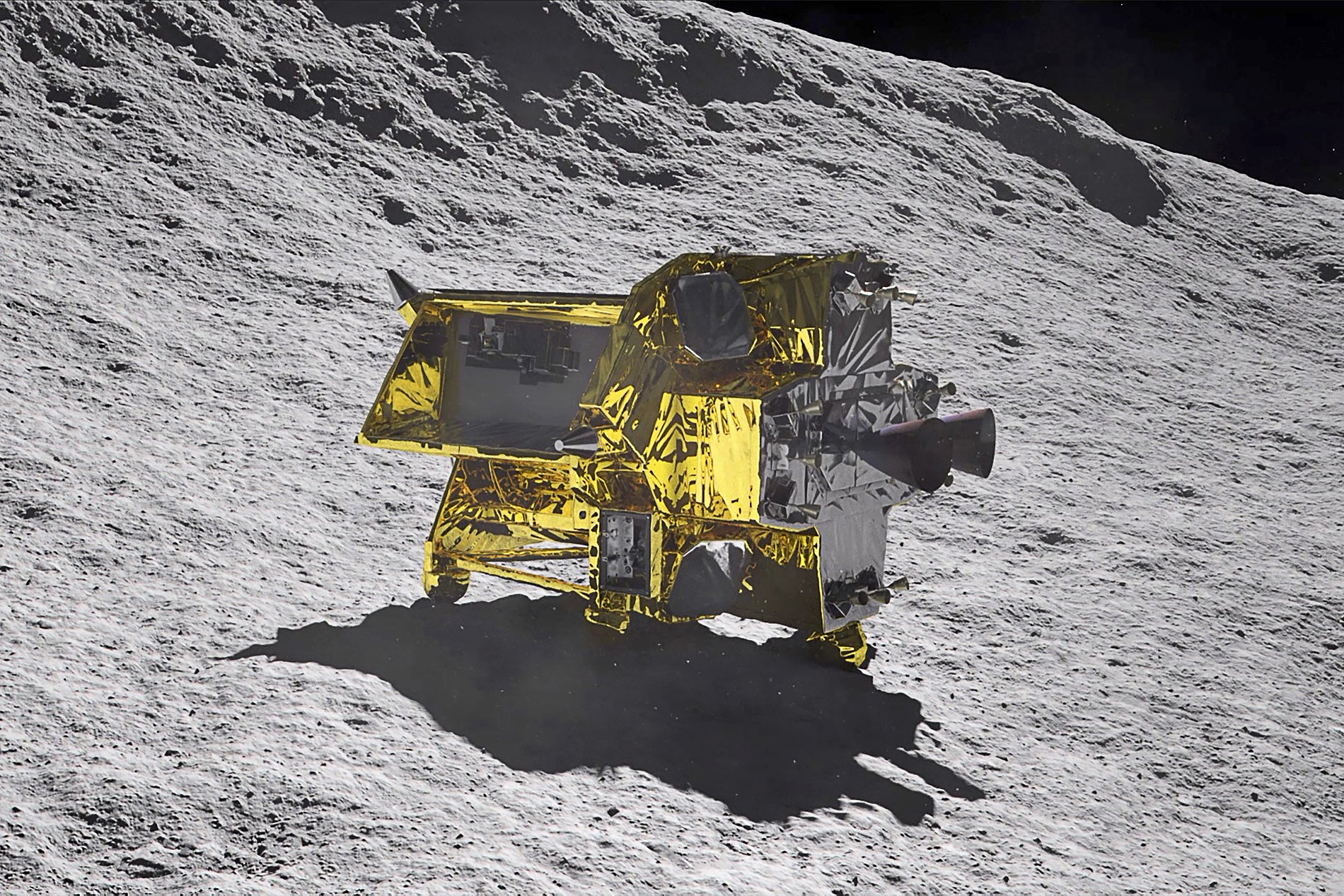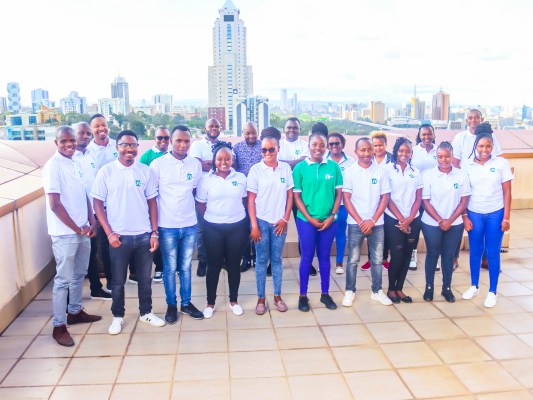
A Japanese spacecraft has soft-landed on the moon, making Japan only the fifth nation in history to achieve the feat.
Called Smart Lander for Investigating Moon, or SLIM, the car-sized robotic lander successfully touched down near the Shioli Crater at the moon’s equator at 10:20 A.M. EST on January 19 (12:20 A.M. local time on January 20 in Japan). The mission was developed and launched by the Japan Aerospace Exploration Agency (JAXA).
“We have been able to confirm it has arrived on the lunar surface,” said Hiroshi Yamakawa, the administrator of JAXA, during a postlanding press conference. Whether SLIM has met its goal of a precision landing in a 100-meter target site remains unknown, however, because of unexpected complications that jeopardize the mission itself.
At the press conference, JAXA officials revealed that although SLIM is in contact with mission controllers and accurately responding to commands, the lander’s solar panels are not generating power, and much of the gathered data onboard the spacecraft have yet to be returned to Earth. The mission is consequently operating on batteries, which have the capacity to power its operations for several hours. After SLIM drains its batteries, its operations will cease—but the spacecraft may reawaken if its solar power supply can be restored. JAXA’s plan had been for SLIM to operate on solar power for about a month after landing. Mission controllers have turned off a heater on the spacecraft to minimize its power consumption—in hopes of maximizing its lunar-surface operations and thus its scientific returns.
The stationary lander carries an onboard multiband camera to study its surroundings. In particular, JAXA scientists are eager to observe the nearby Mare Nectaris (“Sea of Nectar”) on the slope of Shioli, which is thought to be an exposed area of the lunar mantle that bears a greenish mineral called olivine. “From orbit we’ve detected olivine in this region,” says Gordon Osinski of Western University in Ontario. “It’s a holy grail to sample the moon’s mantle”—something SLIM will not do directly.
Initially launched in September 2023, SLIM took nearly four months to slowly reach the moon’s vicinity and finally entering lunar orbit on December 25, 2023. It then spent three weeks gradually lowering its orbit, down to just 15 kilometers in altitude, before beginning its landing attempt on January 19. It is the second Japanese spacecraft to attempt a landing on the moon. The first, the Hakuto-R mission from the Japanese firm ispace, crashed into the lunar surface in April 2023. Only the U.S., the former Soviet Union, China and, most recently, India had successfully landed on the moon before now.
The mission’s primary goal was to test a new method for extremely precise automatic lunar landings, earning SLIM the nickname “Moon Sniper” at JAXA. The mission had a targeted site that is just 100 meters wide, in contrast with the kilometers-wide landing zones of previous missions, such as the crewed Apollo landings. “The demonstration of that pinpoint landing is the symbol of the project,” says Yui Nakama of the European Space Policy Institute (ESPI).
SLIM sought to reach this precision thanks to cross-checking its position against detailed mapping of the moon’s surface by Japan’s Kaguya orbiter and NASA’s Lunar Reconnaissance Orbiter (LRO). Using onboard navigation cameras and autonomous image processing, the spacecraft continuously scanned the surface and identified craters and boulders to adjust its descent in hopes of a safe pinpoint landing.
Having lowered its orbit to an altitude of about five kilometers, the spacecraft then began a vertical descent, free-falling to an altitude of 500 meters before firing its thrusters to hover and scan the surface below for obstacles. It next dropped to 50 meters and performed another hover and scan until, tilting on its side, it fell to the surface from a height of three meters onto the slope of Shioli Crater. The touchdown should have been gentle because of the moon’s weaker gravity, as well as cushioning from five small spherical shock absorbers. The whole landing procedure lasted 20 minutes, referred to as “20 minutes of terror” by SLIM subproject manager Kenichi Kushiki in a blog post last year, and was followed by an agonizing extended wait as mission controllers struggled to understand what had befallen the spacecraft on the lunar surface.
Demonstrating such a precise landing could be a valuable tool for targeting regions at the moon’s poles that receive permanent sunlight to prolong the lifetime of landers or for visiting scientifically-rich locales. “It opens the door for going to more scientifically interesting places,” says Osinski, who is part of the geology team selected by NASA for upcoming human landings that the agency has planned for the water-rich lunar south pole. “We want to go to big boulders or rocks exposed in crater walls. You’ve got to be sure you’re not going to hit any of those on landing.”
At the press conference, JAXA officials confirmed that, shortly before landing, SLIM successfully deployed two small probes, the Lunar Excursion Vehicle 1 and 2 (LEV-1 and LEV-2). The former, weighing about two kilograms, is designed to “hop” on the moon’s surface and take images of the lander and the vehicle’s surroundings. Meanwhile LEV-2—a small spherical ball built by the Japanese toy company Tomy—is meant to open up like one of the Transformers actions figures that Tomy produces and to take images of SLIM.
SLIM is the latest in a recent flurry of lunar missions, most of which have only been partially successful at best. Last week the U.S. firm Astrobotic failed to reach the lunar surface with its Peregrine lander after a fuel leak. But many others are set to follow suit, including the U.S. firm Intuitive Machines, whose mission is scheduled to launch next month. India landed on the moon in August 2023, while a Russian lander failed that same month. SLIM “really shows how the push to go back to the moon is truly global,” says Alex Gilbert of the Colorado School of Mines.
Ultimately, NASA is hoping to return humans to the moon’s surface later this decade as part of its Artemis program, with the first landing recently delayed to 2026. Japan hopes to be a part of this effort, Nakama says. And SLIM, fully successful or not, is bound to keep the nation near the forefront of NASA’s plans for international partnerships on future missions. “We want a Japanese astronaut on the moon,” she says. “This is really the first priority. We want to be a very important partner with NASA.”
Additional reporting by Lee Billings.
























































